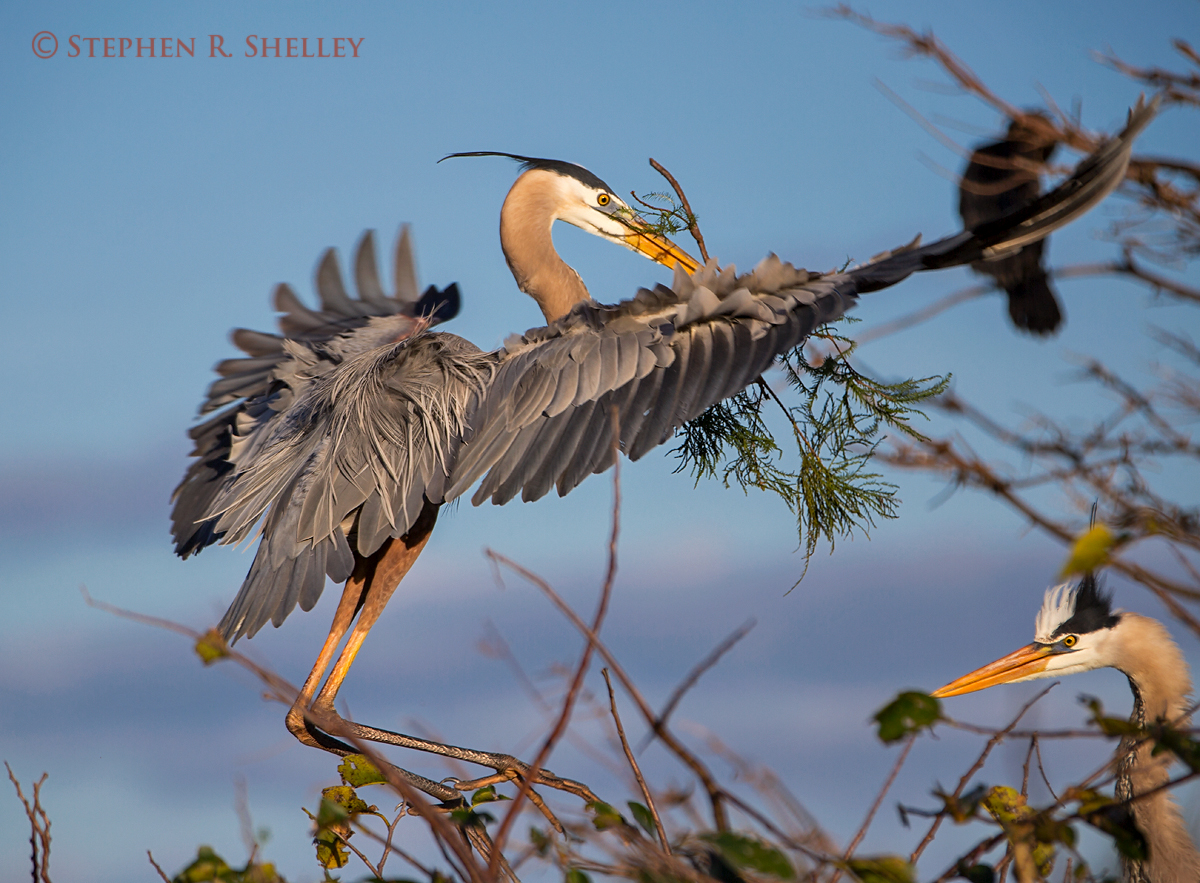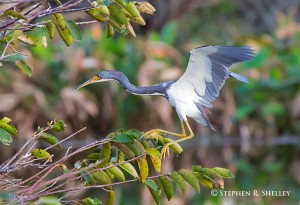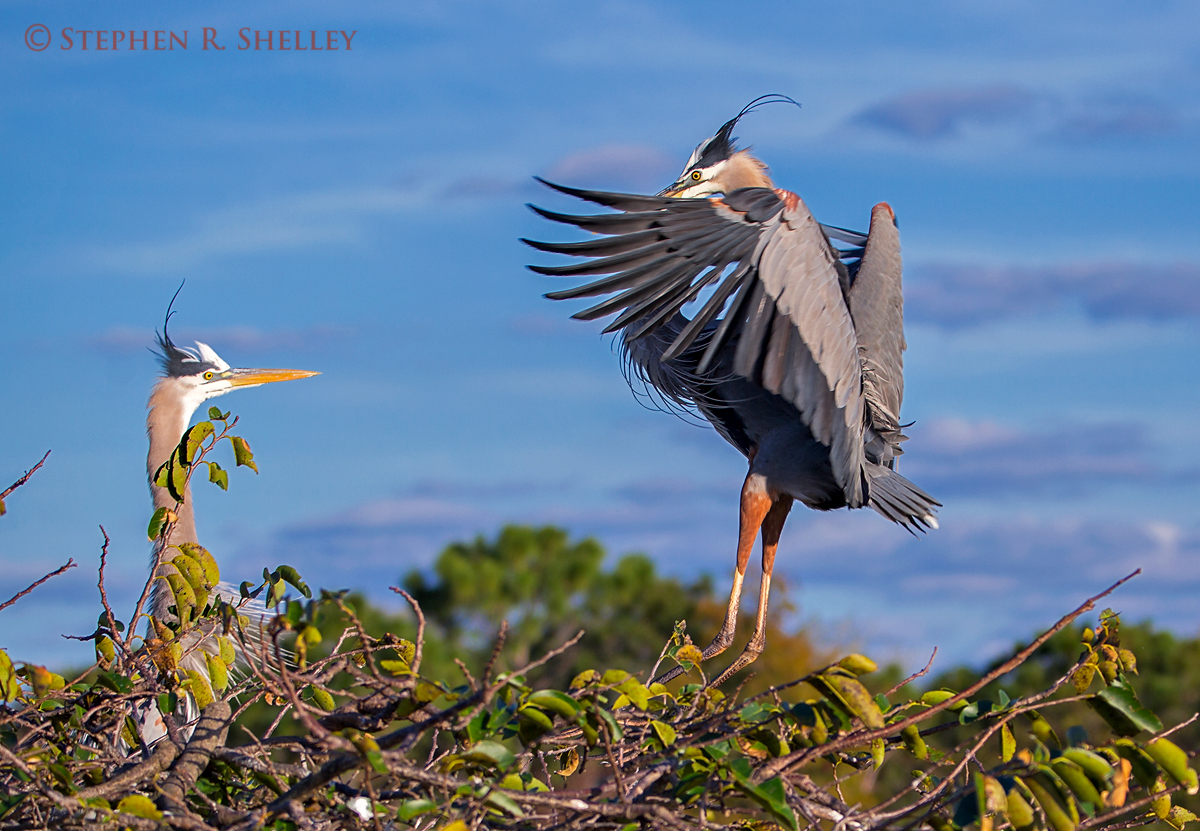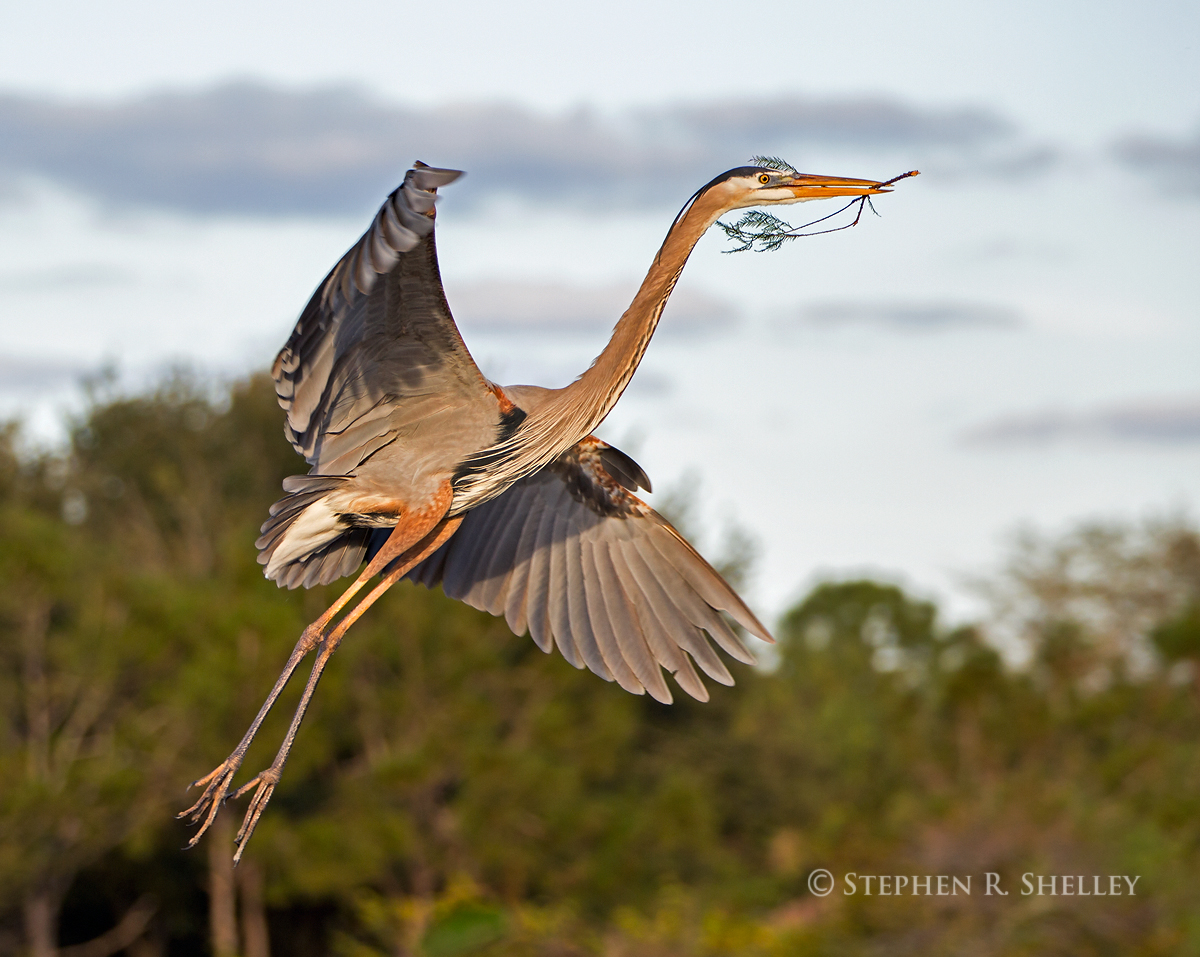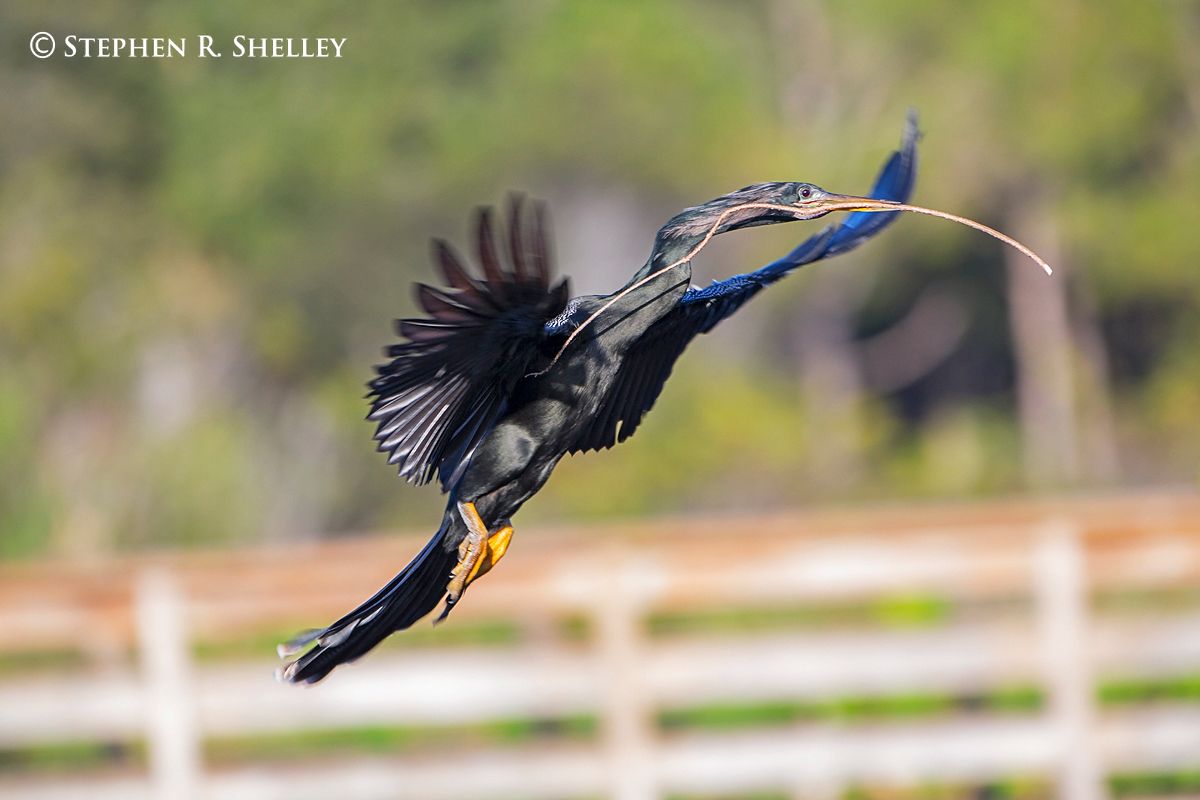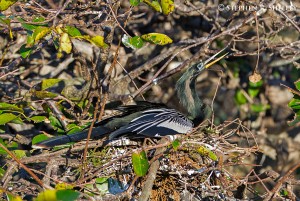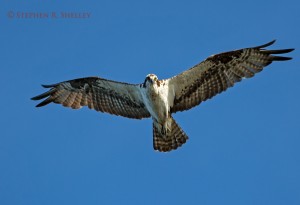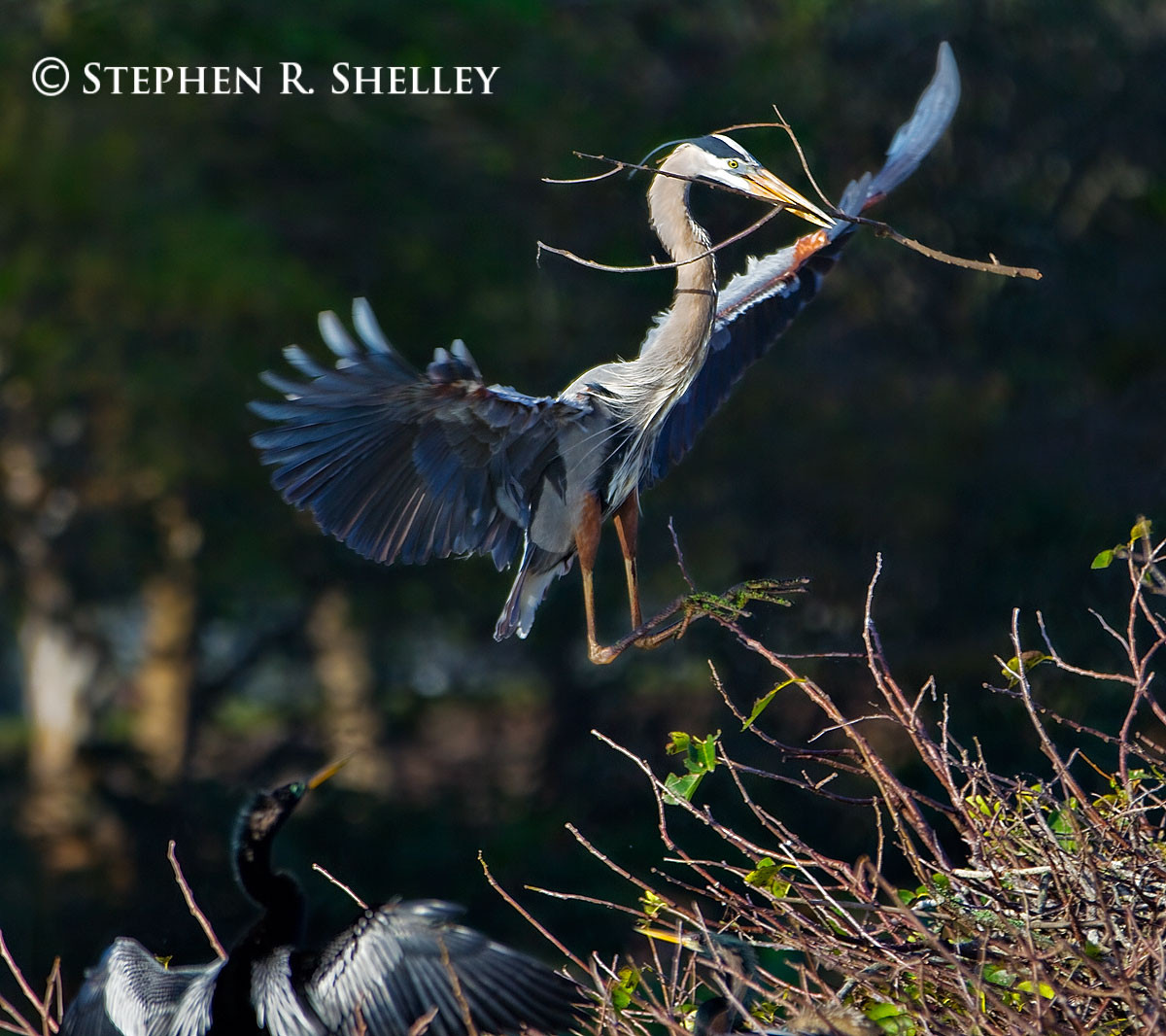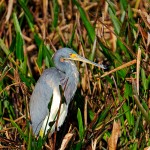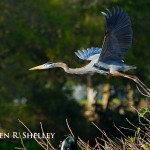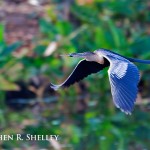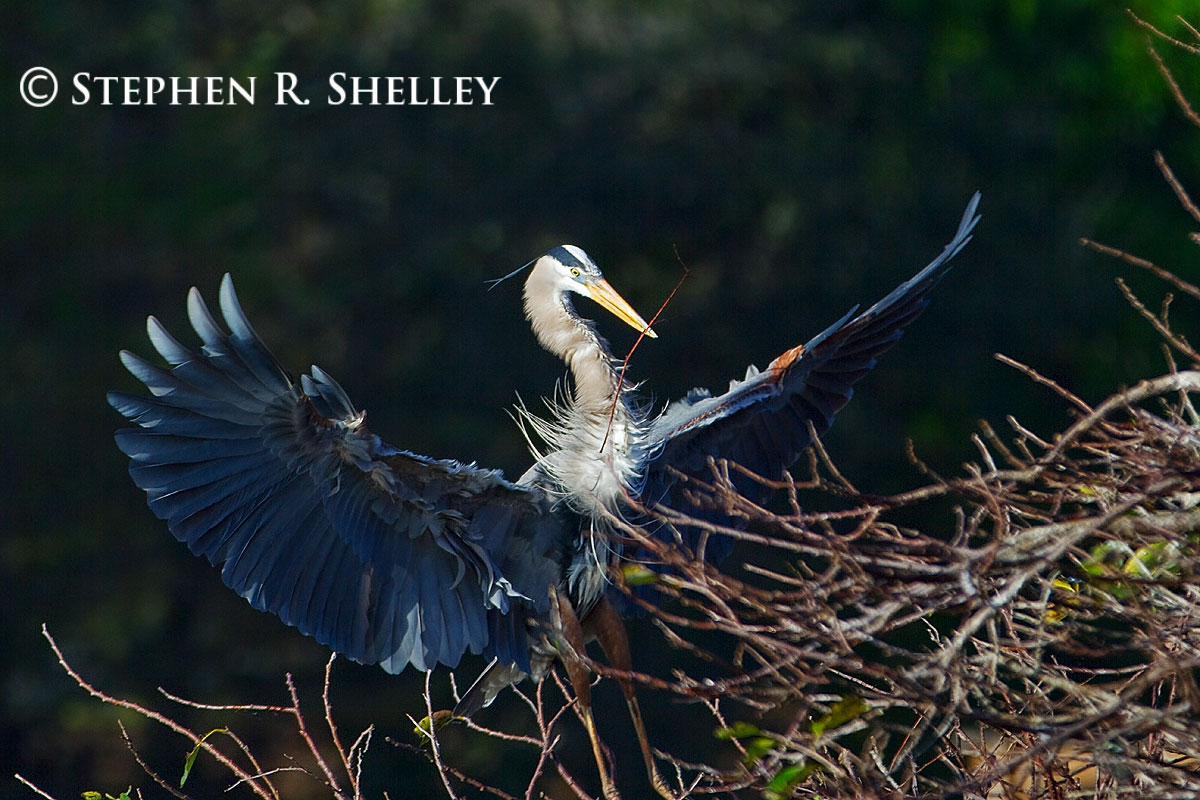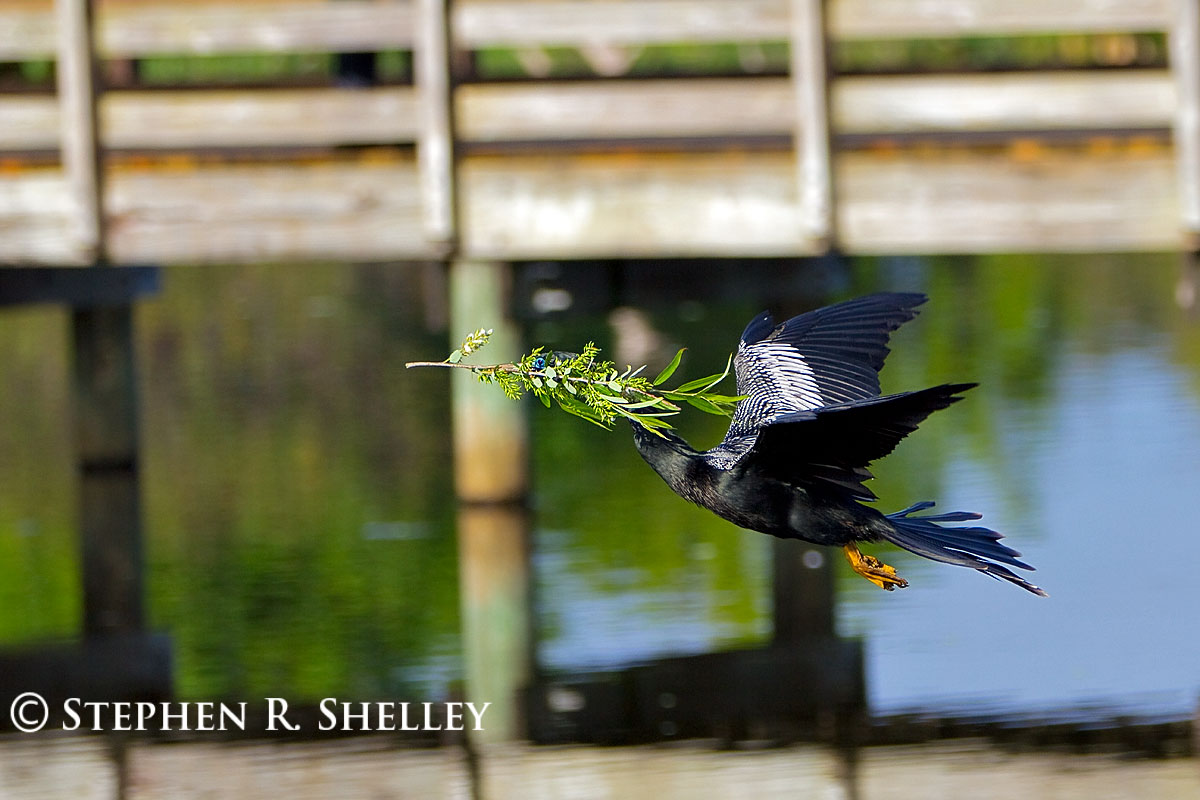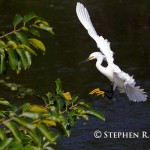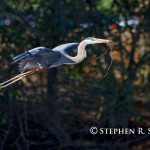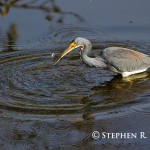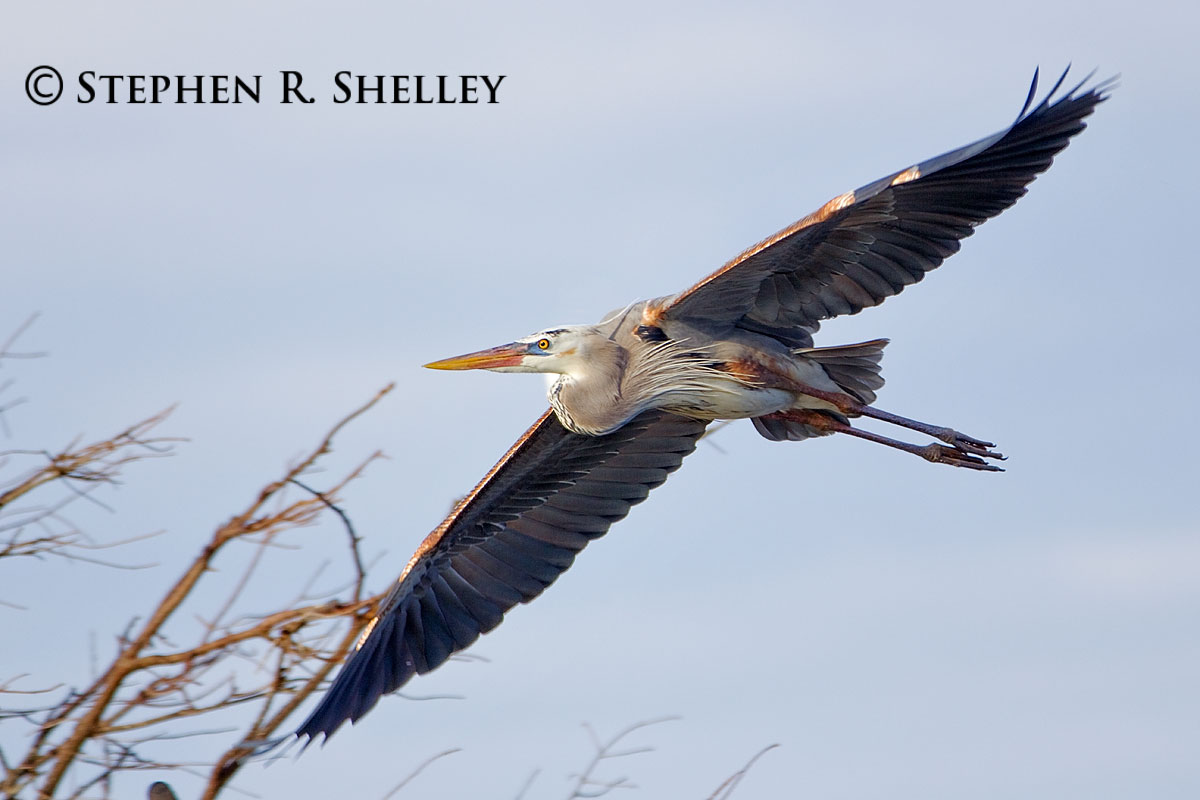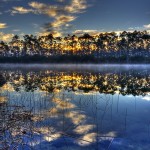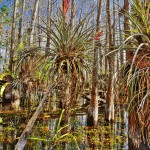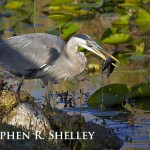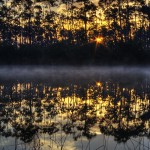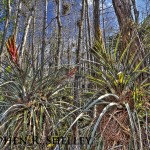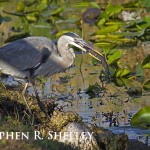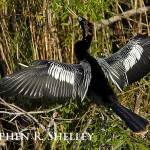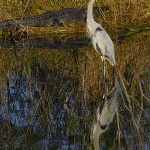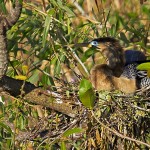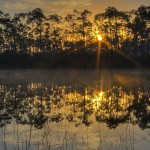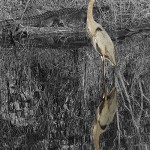A few weeks ago I tagged along with fellow photographer, Robert Chaplin, who was scouting for an upcoming bird workshop. One of our stops was the Wakodahatchee Wetlands in Palm Beach County. The last time I was there was about three (3) years ago and I remembered it being full of nesting birds. When I returned this time it was just as I remembered it if not better. There were more than 10 nesting pairs of Great Blue Herons as well as numerous nesting anhingas and cormorants. The best part is that many of the nests are only a mere 10 to 15 feet from the elevated boardwalk making photographing them easy to do without the need to use a long lens.
Last time I visited during the early morning hours, this time I was there in the late afternoon just before sunset. While I was there some of the Great Blue Heron males were bring food to the sitting females as well as nesting materials. I was able to capture one of the males flying back and forth with nesting materials from a nearby tree. It was a lot of fun to watch much less photograph.
The most awe inspiring part about being there near sunset is the number of birds that fly in to roost for the evening. During the last 30 minutes or so before the sunset hundreds of birds of all varieties flew into the wetlands and started roosting in the nearby trees. By the time I left every tree was full of birds roosting for the evening.
Of all the bird locations I have visited Wakodahatchee is by far one of my favorites. It consistently produces a large number and variety of birds that can be easily photographed with any lens or camera. Eco Pond in Everglades National Park at its peak is the only other location that rivals Wakodahatchee in terms of numbers and variety. However, Eco Pond’s peak is only a few weeks out of every year.
For anyone who has not yet visited Wakodahatchee I encourage you to plan a trip. I can assure you it is worth the drive.
